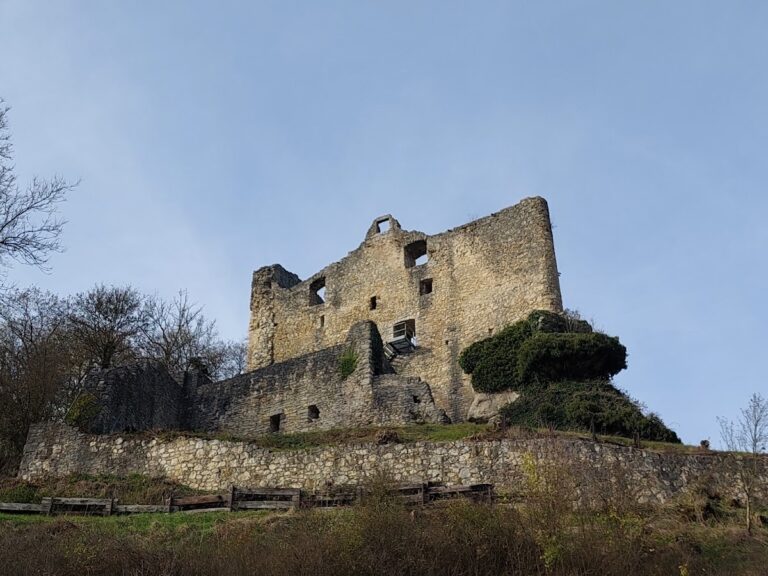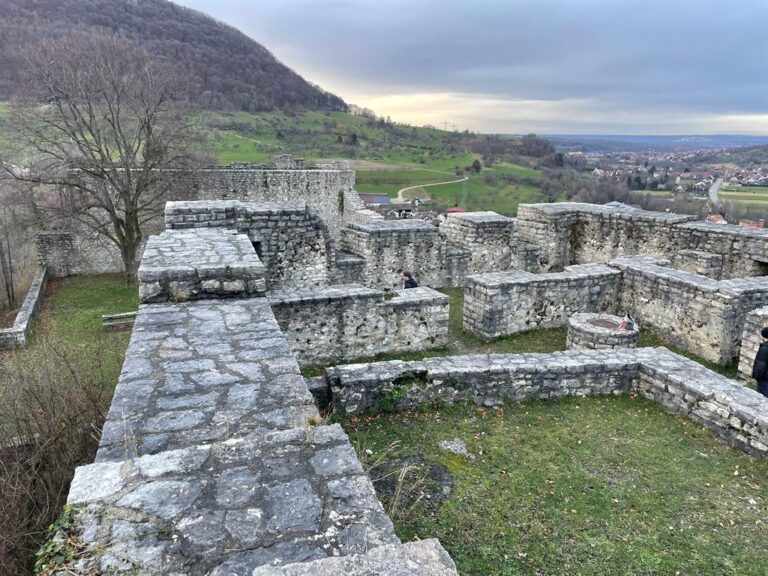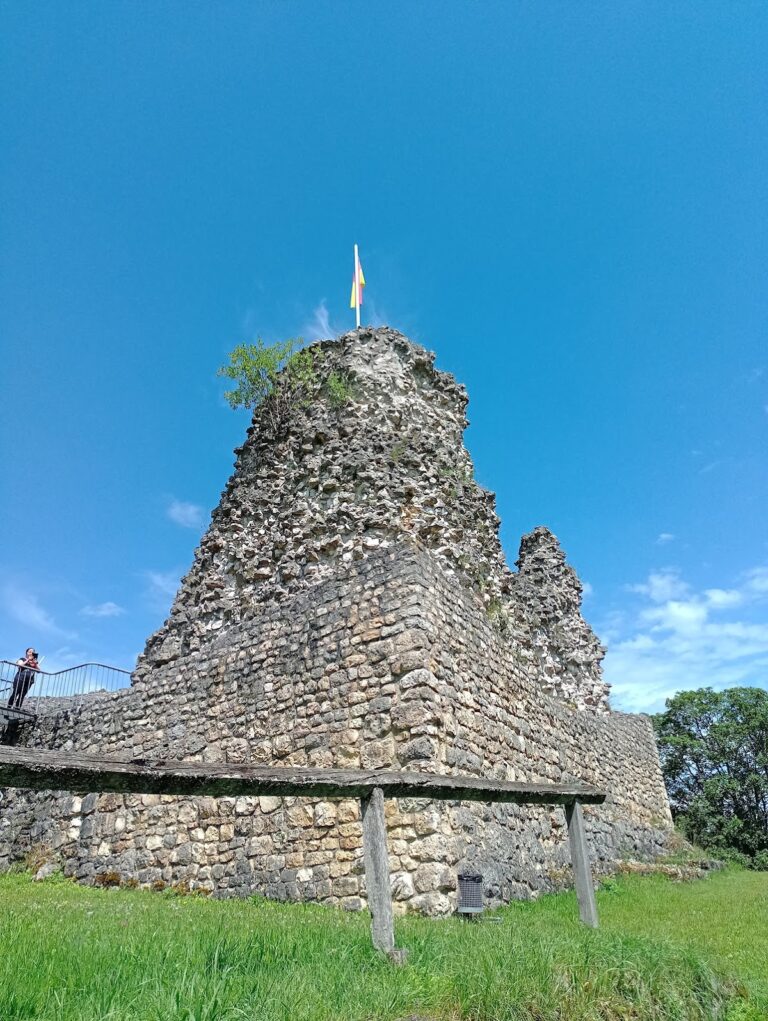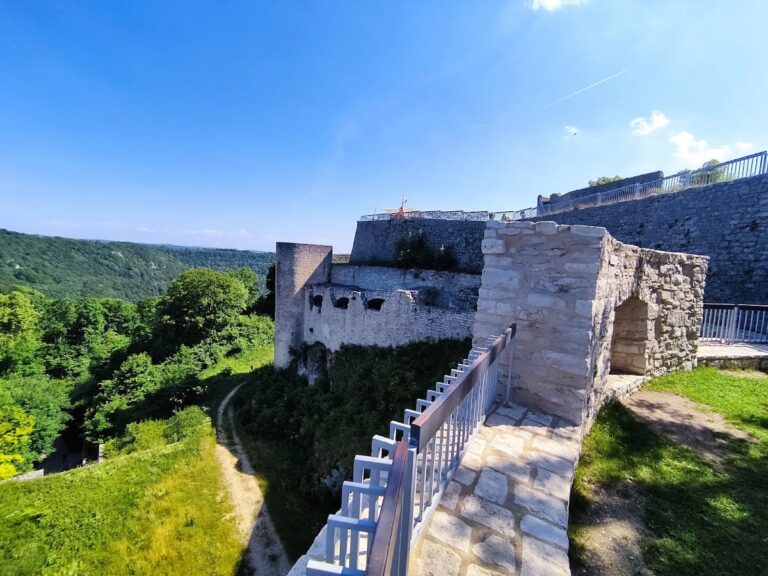Burg Hohengundelfingen: A Medieval Hilltop Fortress in Münsingen, Germany
Visitor Information
Google Rating: 4.8
Popularity: Low
Google Maps: View on Google Maps
Official Website: www.hohengundelfingen.de
Country: Germany
Civilization: Unclassified
Remains: Military
History
Burg Hohengundelfingen is situated near the village of Gundelfingen within the municipality of Münsingen, Germany. This medieval hilltop fortress was erected by members of the free noble Gundelfingen family, who first appear in records dating to the 12th century.
The castle’s origins trace back to the early 13th century, a period when the Gundelfingen family held considerable regional influence. Swigger IV of Gundelfingen, active around 1160 to 1228, is regarded as a possible founder of the stronghold. The first written mention of the castle itself appears in a document from 1236. During this time, the castle served as the family’s ancestral seat and symbolized their standing in the area.
Following an inheritance division among Gundelfingen descendants around 1250, the family’s power began to decline. By the late 13th century, ownership passed into the hands of the Habsburgs after 1293. Over the following decades, the castle changed hands multiple times, often used as collateral in pledges. Occasionally, Gundelfingen family members managed to regain possession, reflecting a fluctuating ownership.
In historical records dated 1389, Burg Hohengundelfingen was described as a “Burgstall,” a German term denoting a castle ruin. This destruction is believed to have occurred amid regional conflicts involving Eberhard the Greiner and rebellious imperial cities, though precise details remain sparse.
Ownership of the site continued to shift in later centuries. Notably, the von Landsee family acquired the castle in 1774, coinciding with purchase by Carl Joseph Reichsgraf von Palm in the same year. Descendants thereafter adopted the compound name “Palm-Gundelfingen,” linking their lineage to the castle’s heritage. By 1805, the castle lost its status as an imperial territory and came under the rule of the Kingdom of Württemberg. Subsequently, in 1812, the Freiherr von Gumppenberg-Pöttmös purchased the property.
In the 20th century, the ruined castle attracted new interest when industrialist Hans Römer bought the site in 1939. He initiated extensive restoration and reconstruction efforts that spanned seventeen years, aiming to preserve and revive the medieval structure.
Remains
Burg Hohengundelfingen occupies a hilltop position overlooking the Lautertal valley, situated on a relatively flat spur. The most prominent surviving feature is the bergfried, or main tower, rising approximately twelve meters. This tower is constructed of rusticated ashlar blocks, known in German as Buckelquadern, characteristic of masonry techniques from the early 1200s. These rough-hewn stones give the bergfried a distinctive appearance that connects it to its period of origin.
From the vantage points atop the bergfried and other surviving sections of the ruins, visitors can survey extensive views across the Lautertal river valley and the adjacent Alb plateau to the south and west. The castle’s elevated location would have offered strategic oversight of the surrounding landscape.
Access to the castle is achieved via a marked path starting at a nearby parking area. The route takes between ten and fifteen minutes and involves no significant elevation change, underscoring the castle’s siting on a gently sloping ridge rather than a steep hill.
Today, the ruins have been subject to careful conservation and partial reconstruction, notably through the mid-20th-century restoration projects led by Hans Römer. While considerable portions remain in ruinous condition, these restoration efforts have stabilized the structure and preserved key elements such as the bergfried. The site is accessible for public exploration, standing as a tangible reminder of the noble family and medieval history associated with this region.
The castle’s position holds historical significance in relation to the nearby Lautertal valley, the source of the Große Lauter river near Offenhausen, and its eponymous village Gundelfingen, all linked through centuries of social and territorial connection.










